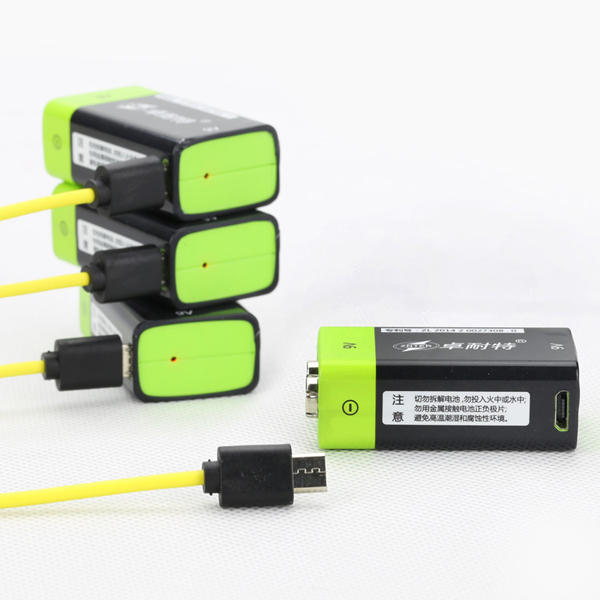9V batteries are/used to be popular for Arduino projects, as they can easily be connected via the power jack of the board. But now that most recent Arduino boards are powered by 5V via a USB Type-C port or Vin in, those are not an option.
I thought I found a solution when I saw the following tweet earlier today which looks to provide a convenient way to connect a 9V battery to devices powered by USB.
accidentally ran into another cursed adapter: 9v battery to USB pic.twitter.com/laKjIi6wUy
— foone🏳️⚧️ (@Foone) January 20, 2020
I was unable to find details about the board, but I suppose the chip close to the USB connector is a 9V to 5V regulator (e.g. LM7805), so this would indeed output 5V. Just don’t expect to fully charge your phone with it, as a typical 9V battery has a 500mAh capacity. [Update: It’s on Retrokits, but out of stock] If you are interested in unusual USB devices, you may want to read the Twitter thread above.
While I miserably failed to find the adapter above so far, I did encounter another interesting type of 9V batteries.
This may not be news to some of you, but it’s the first time I see a battery that can be charged directly with a USB port, no external charger needed.
Specifications for “ZNTER S19” USB rechargeable 9V battery above:
- Cell type: A+ Lithium Polymer battery cell
- Capacity – 400mAh/9V (3.6Wh)
- Output – 9V
- Input – 5V via micro USB port (4.25V charge voltage)
- Lifetime – > 3000 charges
- Charge time – 1.5 hours
- Dimensions – 48 x 25 x 16 mm
- Weight – 25 grams
- Material – Fire-resistant plastic shell
The battery is sold on Banggood for $7.14, but you’ll find other models on the net including on Amazon and eBay.

Jean-Luc started CNX Software in 2010 as a part-time endeavor, before quitting his job as a software engineering manager, and starting to write daily news, and reviews full time later in 2011.
Support CNX Software! Donate via cryptocurrencies, become a Patron on Patreon, or purchase goods on Amazon or Aliexpress





Interesting! You think this can be used as a UPS as well? Having it connected to the USB all the time, and in case of a power surge, the battery powers the device?
I don’t know, but in my experience products like battery banks that are not designed to work as a UPS often do not work properly because of the voltage drop and time required to switch between mains and battery.
That was my experience with a Raspberry Pi battery kit: https://www.cnx-software.com/2016/07/25/raspberry-pi-club-battery-ups-kit-guide-and-review/
The board would reset from time to time when simulating a power failure. The problem gets worse if the board is under load.
Also most of the time the charger relies on a linear regulator and doesn’t provide enough power to convert the output low voltage back to something usable. With 9V out, you’d typically drain 3 times the charging current after dissipating a large part of it as heat from the regulator.
There are purposely made UPS boards if you’re interested, for example this one: https://www.ebay.com/itm/Lithium-Li-ion-18650-Battery-Charger-Module-Boost-Step-Up-DC-5V-12V-to-9V-Board/333363368494
It supports being charged AND discharged at the same time, and by default uses the input current to drive the output, so it will considerably reduce losses.
Have you tried the linked board with an almost empty lipo? All of the similar things I’ve tried do weird things when the load and the charger both want more current than is available.
The board above precisely has a diode from input to output, so if you use it with same voltage (i.e. 9V here) then it will still work.
That was indeed one of my concerns as well 🙂
Since I really needed to protect my ADSL modem against short outages, I couldn’t wait for such boards to arrive, so in the mean time I made my own circuit based on discrete chargers and converters, and I also employed a bypass diode from in to out.
The only thing with this design is that the input power supply must be able to provide at least the output device’s consumption plus the charging current. For this reason I decided that I didn’t need a fast charge and limited the charging current to 100mA or so (a 2.2 Ah LiPo will take roughly a full day from depleted to full charge).
It’s maybe possible if the battery is 1S, there is a charger ok up to 1A and a boost converter 4V to 9V.
Change the feedback resistor bridge to output 5V and try ! maybe it’s ok for 0.5A 2.5W load
a nice teardown of this ZNTER 9V battery :
https://lygte-info.dk/info/BatteryDisassembly9VLiIon%20UK.html
– output voltage easy to ajust
– near 1000mah cell, charged in 1.5h => 1A max charge current
– max output current at 5V : try!
I’m using it in multimeter and it works good. Self discharge is quite low, the voltage is constant 9V until the battery is fully discharged.
Of course “Lifetime – > 3000 charges” is not true, it can be charged ~ 300 times (as any other LiPo battery)
Depends on how you charge it. You can charge a Li-Ion up to 1000 when charged correctly.
For multimeters which are still fine at 5 volts, I’ve used cheap “charging boards” which do both DC/DC conversion and charging from micro-USB with a single LiPo cell. And for the cells I use the small ones made for drones. They start around $2 for 300mAh and the self discharge is low. CR123A/16340 models could be used as well, except that I never ever found one with a real capacity matching the advertised one. Even the “low rates” 700mAh hardly reach 200 :-/
Worth noting not all 9V are exactly the same size. I bought a few 900mAh rechargeables and a charger a few months ago for my guitar but they ended up too big by a few mm to fit my pickup housing.
Fortunately they did fit my irrigation system so I didn’t need to return them…
Also, funny enough, they delivered the batteries in cheap led portable flashlights to overcome the import duties on batteries. Smart.
Hey, you should use grammarly or something. It’s a total bummer you’re too busy to simply proofread your work. Really takes a lot away from your article.
I’m already using Grammarly
Thank you for this.
Plenty usb charged 9v batteries for sale on Amazon UK at all prices.
What are down voters scared of people knowing?
sorry for the random, downvotes, have you seen AA li-ion usb batteries too ? I’d buy a pack asap if so
I’ve seen some and don’t remember which ones they were. I bought Kentli AA batteries with no USB but still made of lithium+converter. However I stopped using them because there’s no discharge indication, and seeing your digital camera suddenly power off with the lens open is not fun. Such devices need to evolve so as to lower the output voltage before completely cutting off (and I know it’s not trivial but it’s doable).
Like these? https://hobbyking.com/en_us/4pc-set-znt5-1-b-znter-1-5v-1250mah-usb-rechargeable-aa-li-po-battery-capacity-type.html
There are also aa batteries available where there is a usb a port hidden below a removable cap disguised as one of the poles